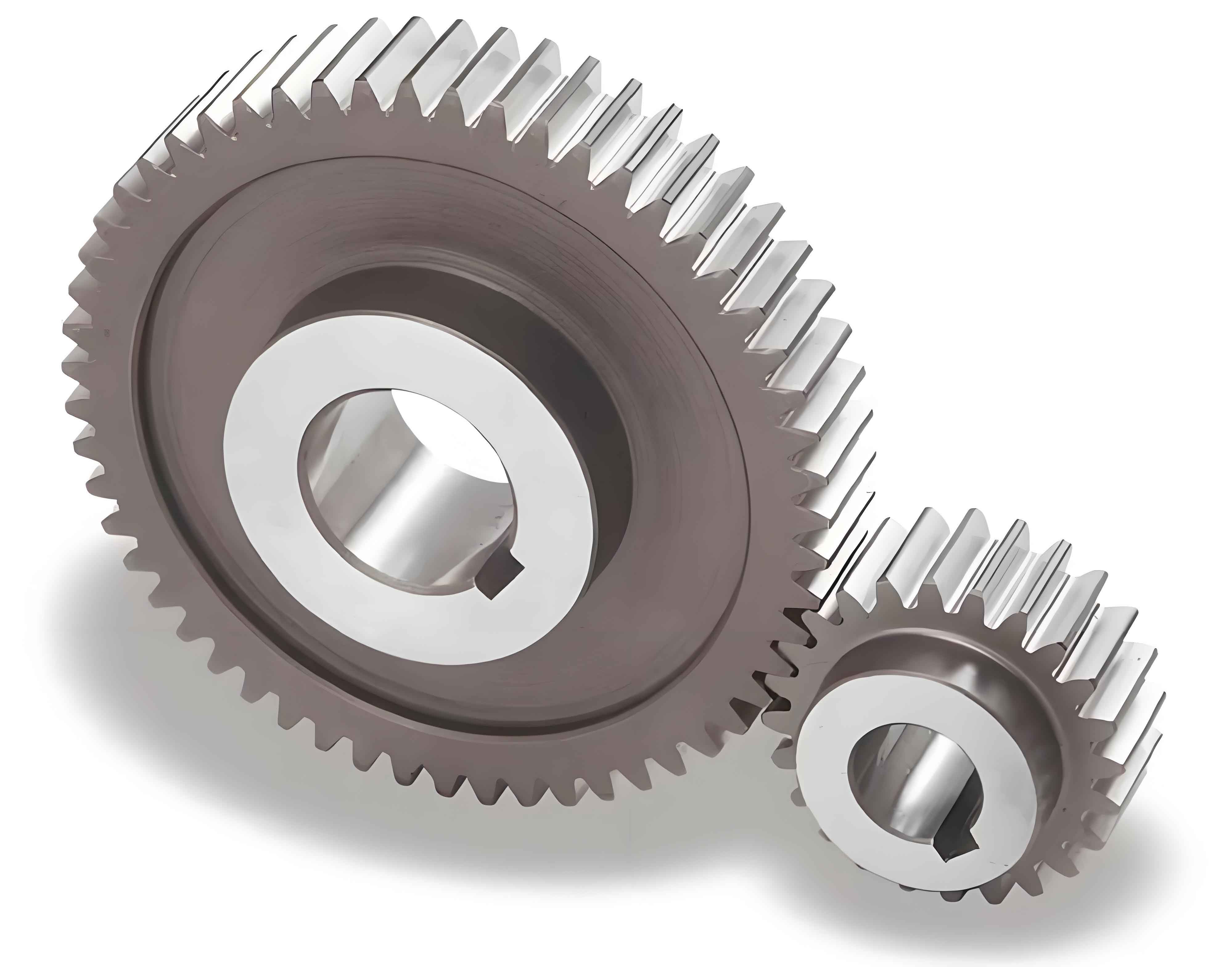This research investigates profile and lead modifications for spur gears operating under low-speed and heavy-load conditions, focusing on improving meshing stability and load-bearing capacity. The study combines theoretical analysis, quasi-static simulations, transient dynamics, and scaled model validation to optimize modification parameters for enhanced gear performance.
Theoretical Framework for Spur Gear Modification
Profile Modification Principles:
The transmission error (TE) and load distribution during meshing form the basis for spur gear profile modification. The fundamental equations include:
$$ \Delta_{\text{max}} = \delta + \delta_{\theta} + \delta_m $$
$$ \delta = \frac{F_t}{bC_{\gamma}} $$
$$ \delta_{\theta} = 3\pi \cos\alpha \cdot 10^{-3} \cdot \Delta\theta \cdot \gamma $$
Common empirical formulas for profile modification include:
| Formula | Equation |
|---|---|
| ISO Standard | $$ \Delta_{\text{max}} = \frac{K_A F_t}{b\epsilon_{\alpha}C_{\gamma}} $$ |
| Walker Formula | $$ \Delta_{\text{max}} = 0.53 \left( \frac{F_t}{b} \right) $$ |
| H.sigg Formula | $$ \Delta_{\text{max1}} = \frac{0.05}{4} + \frac{F_t}{4b} \pm \frac{0.05}{11.5} + \frac{F_t}{3.5b} $$ |
Lead Modification Methods:
For spur gears subjected to shaft misalignment, combined crowning and helix modification proves most effective:
$$ C_h = F_{\beta\gamma} – F’_{\beta\gamma} $$
$$ C_c = \frac{1.5F_{\beta\gamma}}{C_{\gamma}b} $$
Quasi-static Contact Analysis of Spur Gears
The study analyzed a 3m-class shield machine spur gear pair with parameters:
| Parameter | Pinion | Gear |
|---|---|---|
| Module (mm) | 22 | 22 |
| Teeth | 15 | -105 |
| Face Width (mm) | 250 | 240 |
Key findings from unmodified gear analysis:
$$ \text{TE}_{\text{peak}} = 122.65\mu m $$
$$ \sigma_H^{\text{max}} = 2,439\text{MPa} $$
$$ S_F = 0.901,\ S_H = 1.032 $$
Multi-objective Modification Optimization
Four profile modification strategies were compared:
| Strategy | TE Reduction | Contact Temp. | Safety Factors |
|---|---|---|---|
| Linear Tip | +11.2% | 98.4°C | S_H=1.15 |
| Arc Tip | +13.7% | 97.6°C | S_H=1.18 |
| Linear Tip + Arc Root | -47.9% | 95.2°C | S_H=1.31 |
| Dual Arc | -19.2% | 96.8°C | S_H=1.24 |
The optimal profile modification parameters were determined as:
$$ C_a = 285.6\mu m,\ C_f = 95\mu m $$
$$ L_{\text{mod}} = 1.8543m_n $$
Integrated Modification Strategy
The combined modification parameters showed significant improvements:
$$ \Delta \sigma_H = -30.77\% $$
$$ \Delta \text{TE}_{\text{peak}} = -19.2\% $$
$$ S_F = 1.163,\ S_H = 1.211 $$
Transient dynamics analysis revealed:
$$ \sigma_{\text{dyn}}^{\text{modified}} = 1,570.91\text{MPa}\ vs\ \sigma_{\text{dyn}}^{\text{original}} = 2,387.4\text{MPa} $$
$$ a_{\text{vib}}^{\text{modified}} = 220\text{m/s}^2\ vs\ a_{\text{vib}}^{\text{original}} = 260\text{m/s}^2 $$
Scaled Model Validation
Dimensional analysis established similarity criteria:
$$ \pi_1 = \sigma_F m^2 T^{-1} $$
$$ \pi_2 = b m^{-1} $$
Test results confirmed modification effectiveness:
| Parameter | Prototype | Scaled Model |
|---|---|---|
| Root Stress (MPa) | 577.29 | 383.54 |
| Strain (με) | 3,002 | 2,765 |
This comprehensive study demonstrates that optimized profile and lead modifications significantly enhance the performance of low-speed heavy-duty spur gears, providing practical guidance for industrial applications.

